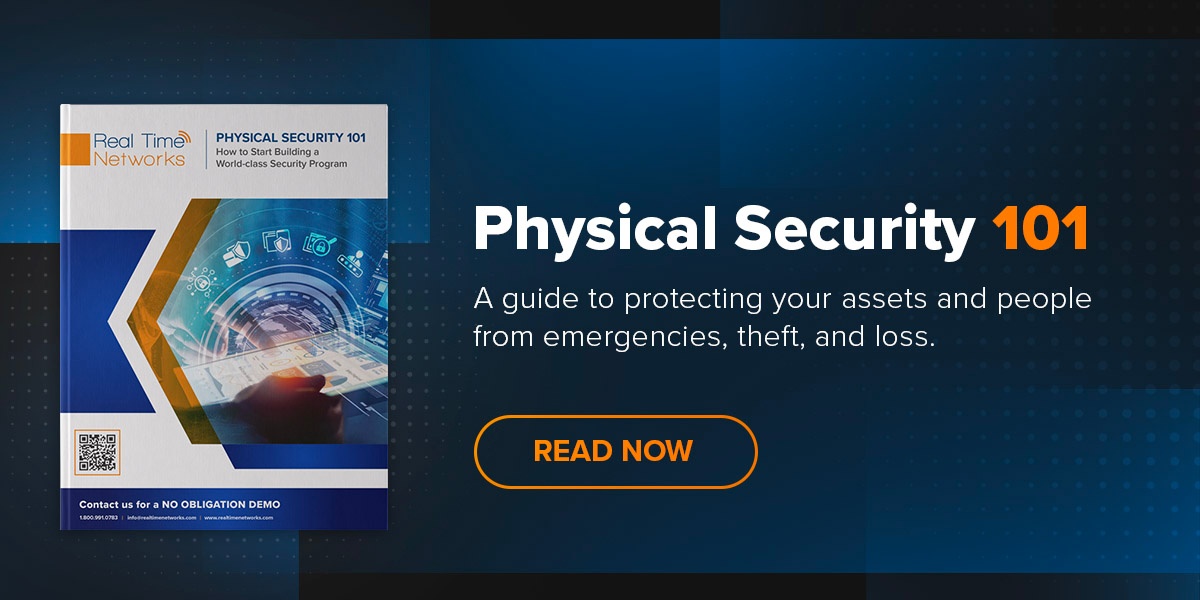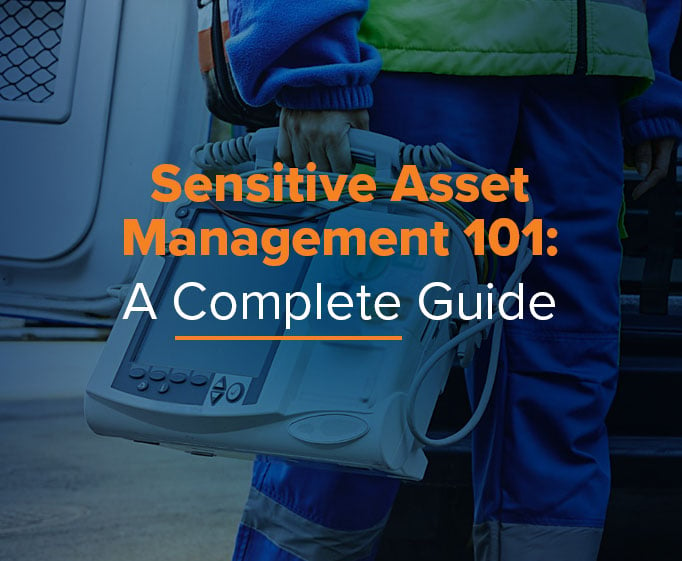By Jay Palter | July 27, 2023
What is enterprise asset management?
Enterprise asset management (EAM) is the practice of optimizing asset utilization and maintaining an asset’s condition throughout its lifecycle in your organization. The goals of EAM are to boost productivity, reduce operating expenses, and increase asset availability.
Enterprise asset management systems exist to support those goals. These systems take various forms but commonly consist of integrated software, storage systems, and dedicated services to maintain stored assets and equipment.
EAM encompasses a range of essential functions, including operations management, asset maintenance, scheduling, supply chain management, procurement, and environmental, health, and safety (EHS) initiatives.
Why do we need enterprise asset management?
Enterprise asset management enables organizations to track, evaluate, and control their assets. They can also optimize the workflows within which they’re used for quality and reliability. In today's business world, organizations across many industries possess various asset types, ranging from major infrastructure, like railroads, pipelines, and manufacturing equipment, to equipment like fleet vehicles, laptops, augmented reality (AR) headsets, and other vital mobile technology.
Adopting EAM practices gives asset and equipment managers better control over complex workflows and working conditions. Following reliable EAM best practices can give you the following:
Smarter asset monitoring
Asset monitoring provides actionable insights into the current and anticipated future states of your equipment. For example, predicting failures and optimizing availability based on prior usage patterns. By aggregating data from various storage locations and various information sources, EAM practices reduce unnecessary work stoppage due to unavailable assets while facilitating more informed decision-making.
Maximized asset utilization
Organizations extend their physical assets' availability, asset reliability, and lifespan by leveraging historical and real-time data collected from IoT devices and smart EAM systems.
Better-managed aging assets
Informed maintenance strategies extend your equipment’s life cycles, improving your return on investment for all managed assets and equipment.
Centralized asset information
Smart storage systems give managers crucial asset details, including location, maintenance requirements, assigned personnel, and upcoming reservation schedules. This automation streamlines asset management workflows, ensuring assets and equipment are accessible and transactions and faults are fully auditable.
Proactive issue resolution
Enterprise asset management systems can also provide enhanced maintenance capabilities for preventative and reactive maintenance management needs. They also help ensure compliance with warranties and help your technicians preemptively address issues that could disrupt production.
Enhancing maintenance management
Tracking and analytics enhance equipment maintenance programs. Asset tracking gives managers more visibility and real-time visibility into how employees use assets and whether any unplanned maintenance is necessary.
What do enterprise asset management systems do?
No two organizations have the same EAM operational needs. That is why modern EAM systems support many core functions that you can adapt for local needs.
Task Management
EAM systems streamline task management by centralizing planned tasks and project work using automated asset reservation calendars. They also efficiently log and facilitate real-time transactions for ad hoc work. The system records every step, from asset intake to daily usage, returns, and end of asset lifecycle management disposition.
Analytics
EAM systems help you leverage advanced analytics tools to generate meaningful operational insights. And then they can automate many planning, scheduling, and work management processes based on those analyses.
Maintenance support
EAM systems support predictive maintenance and preventative maintenance through comprehensive data collection on stored assets, fault code logging, and usage tracking. They also monitor asset performance and support unplanned maintenance and can even be used to remove faulty equipment from circulation. A smart locker used as part of an EAM system can lock down known-faulty devices in a specially-designated maintenance locker and only allow service technicians to remove it.
Scheduling
They also help you visualize asset reservations and preventive maintenance schedules in an easy-to-use calendar.
Health and safety
EAM systems thoroughly document and report license and certification expirations and health and safety concerns to ensure a secure work environment. They mitigate risks by utilizing incident analysis, maintain traceability over entire workflows within which assets and equipment are used, and implement effective process management.
What industries benefit from enterprise asset management?
That set of EAM functionality makes enterprise asset management systems well-suited to support organizations in various public and private sectors.
Energy and utilities
Electric power transmission and distribution entities must manage major assets like pipelines and powerlines. They also manage vehicles, sensitive equipment, and keys to access their secure assets. In North America, all of these functions are regulated by NERC.
Learn More:
NERC Compliance: The Role of Asset and Key Management Systems

Manufacturing
Manufacturing is an entire set of business sectors, including automotive, aerospace, defense, electronics, light and heavy industry, and consumer product manufacturing. But one thing all of those facilities have in common is a need to manage assets large and small. EAM systems are vital in process management methodologies like Lean Six Sigma.
Learn More:
The Impact of RFID Technology in Manufacturing and Production

Law enforcement
Police departments, correctional facilities, and other law enforcement entities might not be the first types of organizations you think benefit from EAM. Still, given the large number of facilities and equipment that administrators must manage and the tight scrutiny under which law enforcement budgets are placed, it makes a great deal of sense. Enterprise asset management systems offer comprehensive solutions for tracking, maintaining, and optimizing critical resources, including patrol vehicles, firearms, communication equipment, body cameras, and more.
Learn More:
How Smart Lockers Are Used For Law Enforcement Equipment Management

Transportation and fleet management
In transportation and fleet management, the primary focus of EAM is providing detailed information about vehicles, maintenance equipment, toolkits, and parts inventories. The goal of fleet EAM is to support vehicle service and logistical functions. Crucial EAM data includes fault codes and service needs, driver mileage logs, spare parts, and maintenance schedules. EAM systems can prompt drivers and technicians for this information when they sign out or return vehicle keys or toolkits.
Learn More: See the evolution of fleet management solutions

Healthcare
EAM solutions in the healthcare sector help you ensure equipment readiness. If medical devices are not findable and in known working order, they can have a life-or-death impact on patients. Healthcare asset management systems are designed to track and locate critical assets, monitor equipment and facility conditions, meet reporting requirements, and integrate with operational and access control information systems.
Learn More:
Healthcare Equipment Management: Improving Operations with RFID Technology

What are smart management systems?
These electronic systems automate asset transactions, collect data on stored equipment and keys to support reporting and analytics, and securely store assets when not used. Assets are secured using one or more access control methods, such as PIN codes, swipe cards, radio-frequency identification (RFID) tokens, or biometrics like iris eye scans, fingerprint scans, or facial recognition. Smart management systems are primarily utilized by organizations that prioritize extensive insight and control over their assets, equipment, and high-value asset keys over the entire equipment lifecycle.
Administrators can customize their asset signout and return processes. For instance, a return checklist can prompt system users to log maintenance issues or complete quality control updates before the smart EAM system accepts the asset for return.
Why use smart key and asset management systems?
These platforms support and improve EAM practices in many ways.
Managing risk

Relying solely on staff members for manual asset tracking and management increases the risk of human errors. Supervisors might overlook routine, but notable asset transactions, or fatigued workers could accidentally take critical keys home, causing disruptions to production schedules. Or bad actors might exploit loose manual practices for theft or fraud. Automated key and asset management systems mitigate these risks.
Proper documentation of key and asset security is often required in regulated industries. Smart management systems provide granular access control and efficiently generate access reports, allowing organizations to demonstrate compliance with regulators.
Read More:
5-Step Physical Security Risk Assessment Any Company Can Use
Preventing losses

Asset and key loss carry both direct and indirect costs. There is the immediate replacement cost for the lost asset, but especially in the case of keys, if the lost key was a submaster or master, rekeying multiple locks throughout the facility becomes necessary. All of these expenses can accumulate rapidly. Additionally, in regulated or publicly-funded industries, key losses may result in hefty fines or burden taxpayers.
Indirect costs include productivity loss, as staff members search for lost assets and procure replacements if they’re not found. And if the lost asset is the only one available and is essential to important workflows, those workflows halt until a replacement is obtained.
Read More:
8 Business Loss Prevention Strategies That Work
Improving operations

EAM systems improve an organization’s operating efficiency by providing greater flexibility and control over key and asset usage. Administrators can easily limit access to specific keys for designated departments or individuals, set time-based restrictions, and impose custom conditions at signout or return as needed.
Employees can reserve keys for crucial tasks requiring specialized vehicles or equipment. The system's automatically-generated transaction logs keep track of each asset's last known location, simplifying the recovery process and eliminating the wasted time spent searching for each misplaced item.
Protecting your reputation

Efficient asset management is an important component of protecting your organization's reputation. Costly or embarrassing losses can tarnish your image, potentially driving prospective customers toward competitors. By implementing strong asset management practices, you can effectively reduce reputational risks and uphold the trust and confidence of your most important stakeholders.
Subscribe to our blog

Jay Palter
Vice President of Marketing & Partnerships





